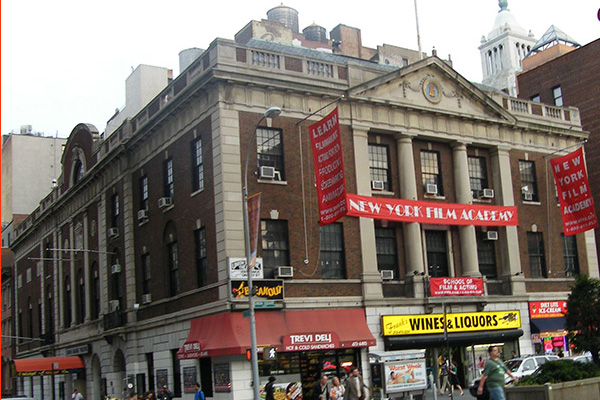
New York City’s Landmarks Preservation Commission unanimously voted to approve the former Tammany Hall building for landmark status on Oct. 29.
The building’s architectural style and connection to the Tammany Hall political machine that dominated New York City politics during the 19th and early-20th centuries influenced the commission’s decision.
“The commission approved the designation, not only because of the building’s architecture and ties to the Tammany machine, but also its subsequent reuse as a union headquarters, theater and film institute,” said Elisabeth de Bourbon, director of communications for the Landmarks Commission.
Inspired by the original New York City Hall, the three-and-a-half story building features a portico with pediments, two pillars and a rusticated stone base. There are also two sculptural reliefs — a revolutionary war cap and Chief Tammany, the mythological Native American from which Tammany Hall’s name is derived.
Director of urban design and architecture studies in CAS Mosette Broderick said the building is emblematic of a lost New York, which the Democratic machine helped define.
“The old Tammany Hall was on Park Row,” Broderick said. “The politicians in the early 19th century hung out at the Astor Hotel on Broadway in the saloon listening to the politicians there. The original buildings are long gone. The Astor Hotel is long gone.”
Urban planning and architecture studies professor Jon Ritter said landmarking Tammany Hall reflects the commission’s broadening view of what constitutes a significant historical site.
“There is also an expansion of the idea of what a landmark is to some extent,” Ritter said. “Going back to the ’70s and ’80s, you begin to see people get reactive around the idea of how you can tell the story of people who are not typically represented in history and the material culture.”
Ritter said landmarks are part of the larger struggle of urban planning, which is a battleground for private and public interests. Once a building is landmarked, the government controls the site and owner’s decision-making abilities are limited.
“You have some owners who are willing and others who will fight against it,” Ritter said. “There is not a lot of government support to maintain and keep up buildings, and there are lots of examples of buildings that are landmarks but are not maintained because its simply doesn’t pay the bills.”
These issues have not plagued the Tammany Building so far.
“A representative of the owner indicated that the owner was ‘not opposing the designation and looked forward to continuing the relationship with the LPC,’” de Bourbon said.
CAS junior Ava Kiai said she was surprised that Tammany Hall was not already a landmark.
“The commission is such a necessary entity, since landmark designations are the only provisions that can effectively prevent the kind of brash razing and renovating that destroys those old districts, the impression of a beautiful, sprawling, organic growth, for the sake of glass and steel,” Kiai said.
Andrew Spohn is a staff writer. Email him at [email protected].






















































































































































